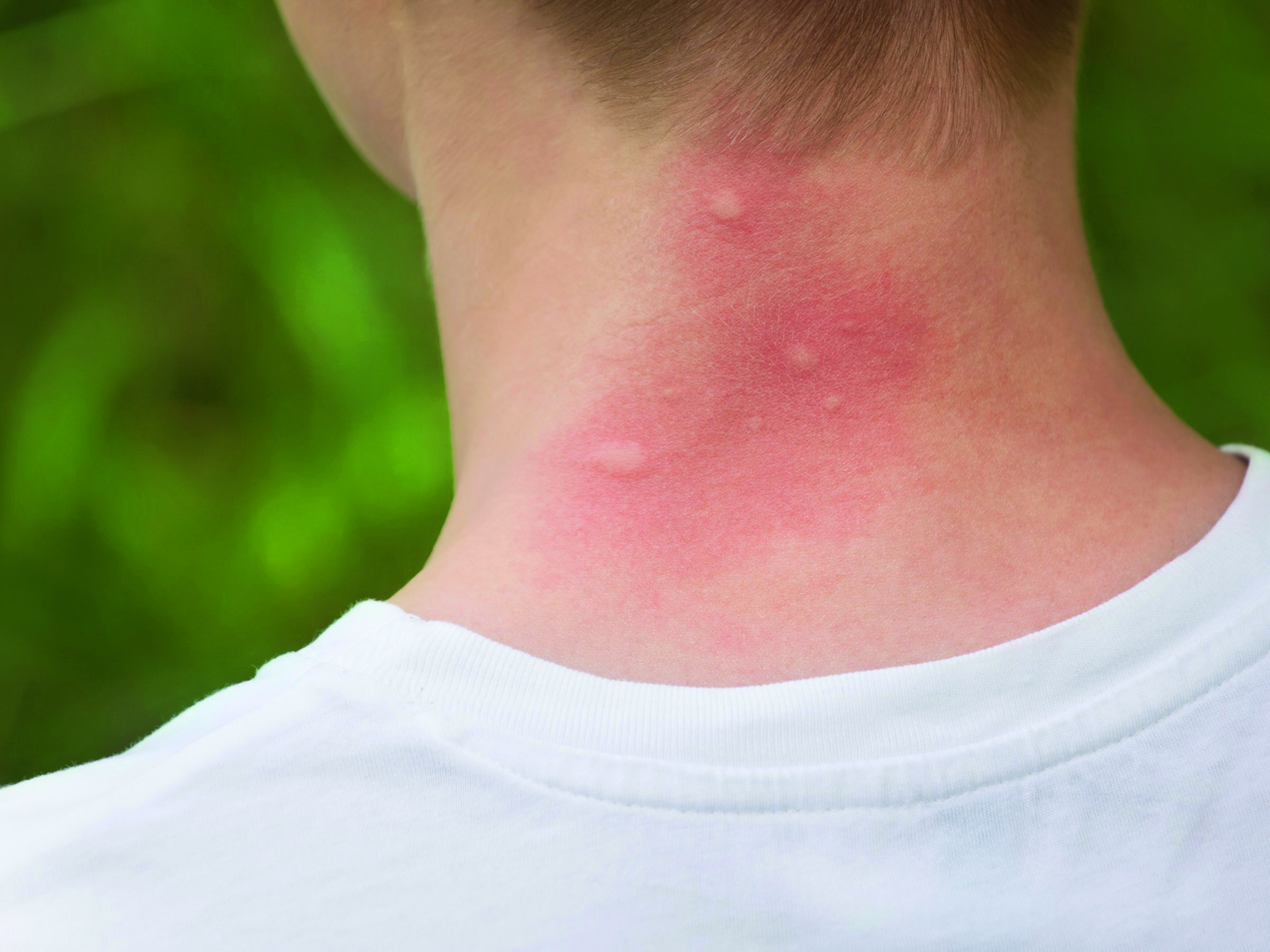

Australia has a variety of tropical marine and land creatures that can cause serious bites and stings. Although it is always best to seek medical advice where possible, it is also helpful to know some first-aid techniques that help. Bites can be from snakes, mosquitoes, midges (sandflies), spiders, ticks, or a variety of other insects. Stings can be caused by bees, wasps and marine creatures like shell or jellyfish.
Bites from insects, snakes or marine creatures can cause pain, stinging, itching and burning of the skin, and red bumps (swelling) and blisters. Intense itchiness may cause scratching, which can break the skin and may lead to an infection. Some people experience severe allergic reactions (anaphylactic shock), to bites or stings, such as:
If a person is experiencing these symptoms, immediately seek urgent medical assistance. If a person stops breathing, call for help straight away by dialing 000. Perform CPR (cardiopulmonary resuscitation) until medical help arrives.
You can minimize the chance of being bitten by mosquitoes or midges by:
Venomous snakes, funnel web spiders, blue ring octopus and cone shell snail bites are treated with pressure immobilization as first aid, but this should not be used for other types of bites and stings. Pressure immobilization aims to keep as much venom retained in the bite area as possible, and stop the lymphatic system from transporting it further into the bloodstream. Minimizing all movement of the affected area will also slow the venom from spreading through the body. Do not use a tourniquet or attempt to suck out the venom.
Jellyfish and stonefish
Irukandji and box jellyfish stings should be washed with vinegar. Irukandji syndrome can develop about 30–40 minutes after being stung by Irukandji jellyfish. Symptoms include headache, overall body aches, chest and stomach pain, nausea, vomiting and breathing difficulties. Stonefish stings should be washed with hot water (water that is only as hot as the person can tolerate). Call 000 immediately if stung by stonefish, box jellyfish or Irukandji jellyfish. Bluebottle jellyfish stings are not venomous but very painful. Wash sting with sea water then hot water (water that is only as hot as the person can tolerate). Apply ice, if no hot water is available. Do not apply ice directly on to the skin, rather wrap it in, for example, a thin cloth.
Bee stings
Bee stings can be removed by scraping the area with your fingernail, rather than brushing it off. Red-back spider bites or wasp stings can be treated by washing the area with cool water and applying ice to help relieve pain. Do not apply ice directly on to the skin, rather wrap it in, for example, a thin cloth.
Ticks
Ticks are tiny insects that can burrow into your skin and feed on the blood. Some people have severe allergies to tick bites, which can be made worse on removal of the tick, so it is best not to attempt to remove them manually. If you have been bitten by a tick, it is best to remove it by using a special spray from the pharmacy that quickly freezes and kills it. If you are allergic to ticks, bee or wasp stings carry emergency medicine (such as an Epipen®) and a mobile phone, so you can call for assistance, with you at all times.
Always inform pharmacy staff if you are taking any other medicines, or if you have any other health conditions, because some over-the-counter medicines may not be suitable for you. Medicines from the pharmacy can help relieve the discomfort from bites or stings. These are:
Pharmacies can also supply a range of tropical strength water resistance insect repellents, ice-packs, and first-aid kits with bandages and creams. These are handy to keep in the house or take to the beach, traveling overseas or walking in the bush. Ask your pharmacist for advice on the most suitable treatment for you.
Health Direct: www.healthdirect.gov.au
Better Health Channel: www.betterhealth.vic.gov.au
Disclaimer: The information provided is a guide only, is current at time of publishing, and is not intended to replace the advice of your pharmacist or doctor.
IN EMERGENCIES DIAL 000.